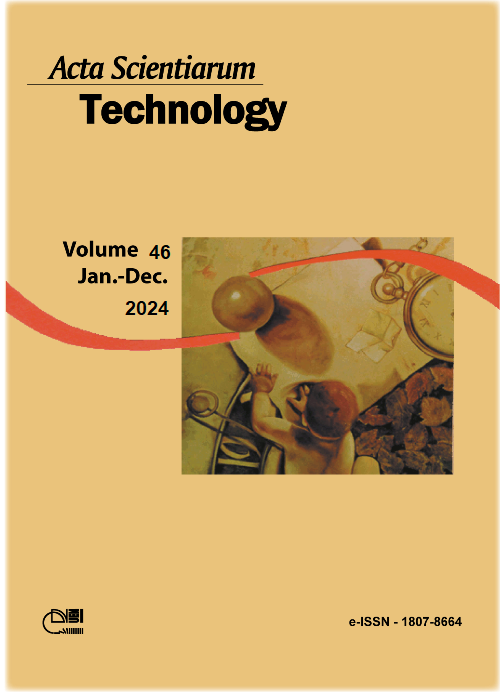Computational implementation of alternative method for determining the loss of prestressing by deformation of the anchorage in post-tensioning
DOI:
https://doi.org/10.4025/actascitechnol.v46i1.62978Palavras-chave:
prestressed concrete; prestressing loss; post-tensioning; anchorage deformation.Resumo
Due to its advantages, Prestressed Concrete has been used as a structural element in many buildings worldwide. In order to overcome large spans, limiting the formation of cracks, its application can be visualized, for example, in bridges, viaducts, and building slabs. These structures are executed by stretching steel cables with a subsequent release, introducing compressive stresses in the concrete. However, during this process, stress losses occur in the active reinforcement, requiring forecast by the designers. Quantifying these losses in certain cases is a long and iterative process. The present work aimed to present the computational implementation of an alternative method for determining the loss due to deformation of the anchorage in post-traction. In order to prove its effectiveness, this method was contrasted with two conventional methodologies established in the literature. To this end, two models of beams of the same cross-section were simulated, however, with different spans and cable paths. Both proposed simulations aimed to cover all possible situations for the development of prestressing stress along with the tensioned cables. The alternative method showed minor differences in all measurements compared to the conventional methods, proving its effectiveness. Furthermore, the computational tool, entitled vProt, proved to be reliable in the two proposed simulations, allowing its use in the elaboration and verification of structural projects.
Downloads
Downloads
Publicado
Como Citar
Edição
Seção
Licença
DECLARAÇíO DE ORIGINALIDADE E DIREITOS AUTORAIS
Declaro que o presente artigo é original, não tendo sido submetido í publicação em qualquer outro periódico nacional ou internacional, quer seja em parte ou em sua totalidade.
Os direitos autorais pertencem exclusivamente aos autores. Os direitos de licenciamento utilizados pelo periódico é a licença Creative Commons Attribution 4.0 (CC BY 4.0): são permitidos o compartilhamento (cópia e distribuição do material em qualqer meio ou formato) e adaptação (remix, transformação e criação de material a partir do conteúdo assim licenciado para quaisquer fins, inclusive comerciais.
Recomenda-se a leitura desse link para maiores informações sobre o tema: fornecimento de créditos e referências de forma correta, entre outros detalhes cruciais para uso adequado do material licenciado.















